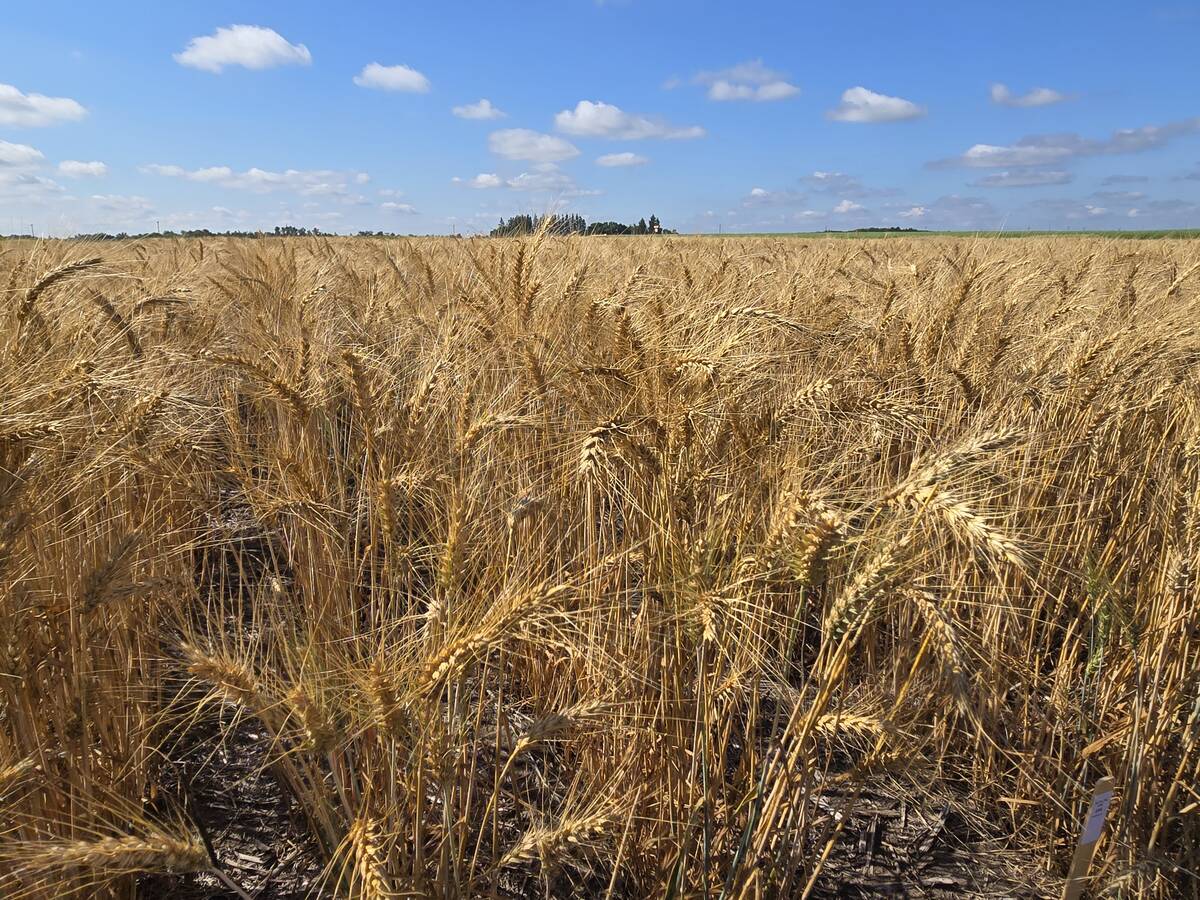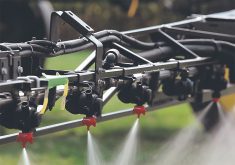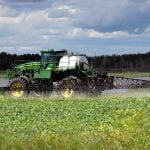Two entrepreneurs believe they have found an answer to the problem of solids accumulating in the bottoms of hog manure lagoons.
Chris Wiebe, owner of Wiebe Investments Ltd., and Doug Redekop, president of Precision Pumping Ltd., have developed a floating dredger that has an agitator installed on its underside to stir up the solids beneath the surface of the slurry.
The result, they say, is a more consistent slurry and a system that helps remove solids that can build up in the bottom of lagoons and add to the challenge of maintaining them.
Read Also

Fall rye hits record high in Manitoba
Winter cereals 2025: More Manitoba fields grew fall rye in 2025 than ever before, but winter wheat slipped and, while spring stand survival was good, drought took its toll
Redekop demonstrated the dredger at a hog farm last week as part of a tour held during the Living With Livestock conference in Manitoba, a national event aimed at bringing together information on the environmental challenges in livestock production.
The dredger, which floats on pontoons, is 7.2 metres long and three m wide. Besides having the agitator, it also carries a pump so the slurry can be sent through a hose for manure application as the dredger moves across a lagoon.
Five-m poles are driven into the ground at each end of a hog manure lagoon. Those poles are the anchors for a cable strung across the lagoon.
The dredger, which weighs almost six tonnes, is then connected to the cable to draw itself across.
In lagoons where solids have gradually accumulated over the years, it can take a couple of years of using the dredger and its agitator to reverse the buildup so the lagoon regains its original storage capacity.
Redekop said the equipment is capable of stirring up the solids in a clay-lined lagoon without creating a lot of disturbance and jeopardizing the integrity of the lagoon.
That has been an issue with the more conventional agitators already in use, he said.
Because the agitation with the dredger takes place below the surface of the slurry, there is less gas and odour released into the air, said Redekop.
For the operator, that can alleviate exposure to poisonous gases such as hydrogen sulfide. The result also means less noxious smells reaching neighbours in the area.
The pump on the dredger can typically put through about 1,100 gallons per minute, although rates as high as 1,600 gallons per minute have been achieved when the slurry was being pumped over a distance of a kilometre or less. The hose used is rated at 175 pounds per sq. inch.
Redekop said the amount of pressure the hose can take has sometimes been a limiting factor, particularly when it comes to pumping the slurry over longer distances. Too much pressure could blow a hose, especially if something plugs the line. A gauge is mounted on the pump to monitor the pressure.
“And of course we monitor the pipeline regularly as we’re pumping to alleviate concerns with that.”
Straw blown onto lagoons for odour control can pose a challenge. When pumping out with the dredger, the hose for the slurry has occasionally looped around the straw on the surface, causing it to bunch.
“How we’re trying to address that is by installing a cannon onto the platform of the dredge, so that we can submerge the straw below the surface prior to pumping or as we’re pumping,” Redekop said.
“We can deal with it when it’s below the surface. It’s when it’s at the surface that it loops in the floating hose.”
Redekop said they have experienced some plugging of the manifold on the pump because of straw.
The installation of a chopper to break up the straw as the slurry is being pumped should solve that problem, he said.
Saves money
Redekop estimated the cost per million gallons of slurry pumped is about $9,000. Because the dredger replaces the need for a tractor, a conventional agitator, a pump and a drive unit, the savings to a hog producer could be $1,000 per million gallons applied, he said.
“That is all contingent on distance pumped and the number of fields we’re pumping onto.”
He pegged the cost of the dredger and equipment at about $195,000. That excludes the price of the hose that carries the slurry to the field as well as the securing cable across the lagoon and the poles used to anchor the cable.
Only two cement ramps are needed at a hog manure lagoon to accommodate the dredger, compared with the four or more ramps commonly needed for more traditional agitators, Redekop said.
Shore-based agitators have a limited reach, creating the need for more cement pads.
Redekop and Wiebe are promoting the dredger through Agrinomics Inc., a company that they established together. The dredgers can be bought, leased or hired to remove slurry from hog manure lagoons.
More information is available by going to www.producer.com and typing “dredger” in the go box.














